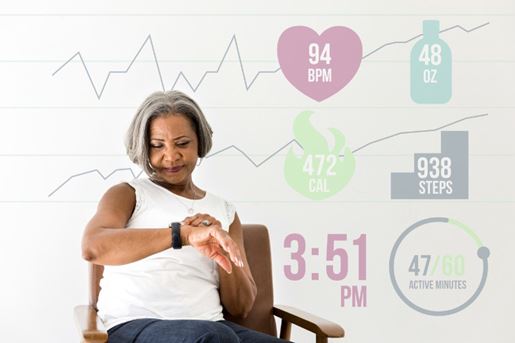Harnessing Mobile Health Technology for Secondary Cardiovascular Disease Prevention in Older Adults
Published: April 01, 2021

- Mobile health (mHealth) is defined as ‘the use of mobile and wireless technologies to support the achievement of health objectives’ and includes voice and short messaging service (SMS; i.e., text messaging), global positioning system (GPS), Bluetooth technologies, and wearable garments or accessories that provide physiologic monitoring.
- This scientific statement describes studies that have used mHealth technology for secondary cardiovascular disease (CVD) prevention in older adults (>60 years old) and reviews the benefits and challenges of mHealth applications in this population.
- Effective, widely accepted, and time-efficient mHealth interventions to improve CVD health in adults aged 60 years and older should be a top health priority.
Supporting Materials
- Commentary: Opportunities and Challenges for Using Mobile Health (mHealth) Technologies for Secondary Cardiovascular Disease Prevention in Older Adults by Ruth Masterson Creber, PhD, MSc, RN, FAHA
- Top Things to Know: Harnessing Mobile Health Technology for Secondary Cardiovascular Disease Prevention in Older Adults
- News Release: Screen time for older adults: Mobile health tech can support seniors with heart disease
Recommended Reading
- Current Science on Consumer Use of Mobile Health for Cardiovascular Disease Prevention
- Assessment of Remote Heart Rhythm Sampling Using the AliveCor Heart Monitor to Screen for Atrial Fibrillation
- Secondary Prevention of Atherosclerotic Cardiovascular Disease in Older Adults
- Use of Mobile Devices, Social Media, and Crowdsourcing as Digital Strategies to Improve Emergency Cardiovascular Care